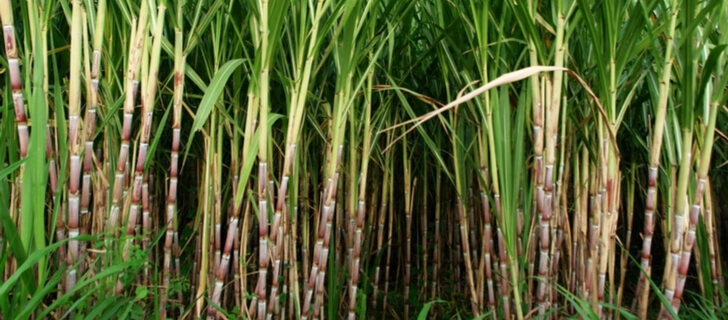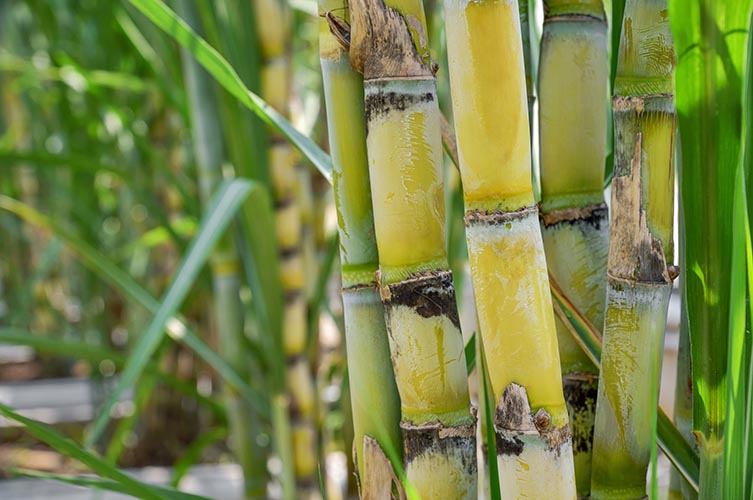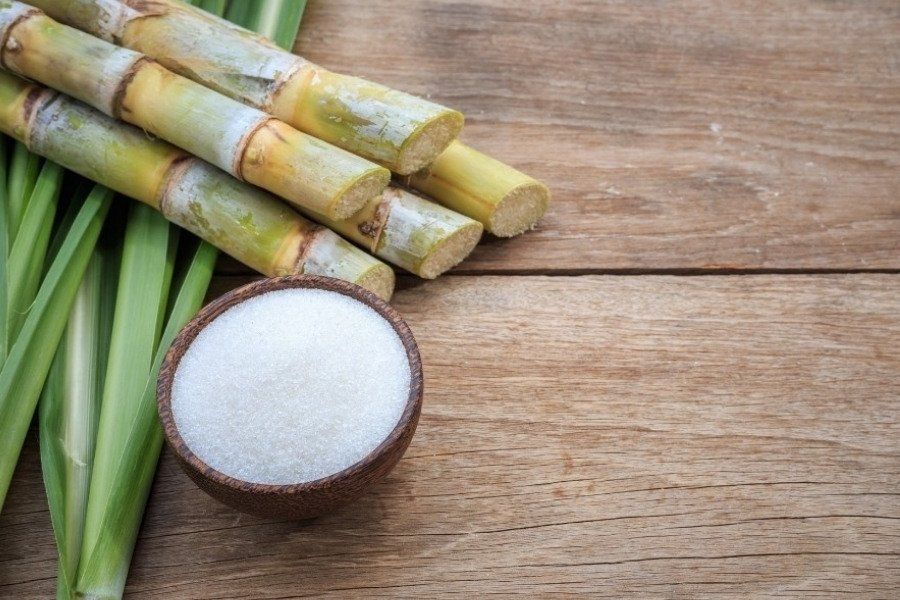Everything About Sugar Canes: What Are Sugar Canes Used For and Their Duty in Global Agriculture?
Sugar canes offer as a keystone of worldwide farming, largely acknowledged for their function in sugar manufacturing. They also add to the production of by-products like molasses and ethanol. These aspects not just support different industries however likewise impact economic stability in country areas. Nonetheless, the cultivation of sugar walking canes faces considerable environmental challenges. Recognizing their complex role triggers additional expedition into their farming techniques and sustainability efforts.
The Agricultural Refine of Sugar Walking Cane Farming
Sugar walking cane growing might vary by area, the basic agricultural procedure remains constant. The initial action includes selecting high-yielding varieties appropriate for neighborhood climates. Preparation of the soil is important, commonly calling for husbandry and the enhancement of fertilizers to boost fertility. Growing generally occurs during the rainy season, with farmers utilizing either entire stalks or cuttings to establish new crops.As the plants grow, they need attentive treatment, consisting of weed control, parasite administration, and irrigation, depending upon the environmental conditions. Farmers monitor the sugar walking stick's development cycle, which typically extends 10 to 24 months, prior to gathering. Gathering is labor-intensive, usually carried out by hand or with specialized machinery, making certain very little damages to the stalks. Following harvest, the walking cane is moved to refining facilities. This thorough growing process not just sustains neighborhood economic climates however also plays a considerable role in international farming techniques, adding to food and energy supplies.
Sugar Production: From Cane to Crystal
The journey of sugar manufacturing starts the moment freshly harvested sugar walking cane gets to refining facilities. The initial step entails chopping the walking cane and cleaning to prepare it for extraction. Utilizing high-pressure rollers, the juice is extracted from the smashed cane, leading to a sweet fluid referred to as sugarcane juice. This juice undertakes explanation, where pollutants are removed via the addition of lime and heat.Next, the made clear juice is concentrated by steaming it down to produce a thick syrup. This syrup is then crystallized by cooling, allowing sugar crystals to develop. The taken shape sugar is divided from the remaining syrup, known as molasses, via centrifugation.Finally, the sugar crystals are washed and dried out, leading to the familiar granulated sugar (What Are Sugar Canes Used For). This process changes raw sugar cane right into an item that is essential to different cooking and industrial applications, highlighting the value of sugar in international farming
Biofuels and Sugar Canes: A Sustainable Future
As the world significantly seeks sustainable energy remedies, sugar canes have arised as an encouraging source for biofuels. The biomass originated from sugar walking canes can be transformed into ethanol, a sustainable gas choice that substantially reduces greenhouse gas discharges contrasted to nonrenewable fuel sources. This procedure not just gives a cleaner power resource but also promotes energy freedom for numerous countries.In addition, sugar walking stick farming sustains country economic climates by developing work in both farming and biofuel production sectors. Making use of sugar walking sticks for biofuel manufacturing likewise motivates agricultural diversification, which can improve dirt wellness and minimize reliance on single crops. Furthermore, the spin-offs of sugar walking stick handling can be made use of for electrical power generation, additionally adding to a sustainable power cycle. As nations venture to satisfy renewable energy targets, sugar canes are poised to play an important role fit a more lasting future in the biofuel landscape.

The Duty of Sugar Canes in Drink Production
Sugar walking canes play a substantial duty in drink production, acting as a key active ingredient in rum and adding to the sweetness of many sodas. Furthermore, their natural juices are made use of in numerous beverages, enhancing taste and allure. This convenience highlights the importance of sugar walking sticks in the worldwide drink industry.
Sugar Walking Stick in Rum
Rum manufacturing is delicately connected to the cultivation of sugar walking cane, a necessary crop that gives the required fermentable sugars required for fermentation. This process starts with the extraction of juice from harvested sugar walking sticks, which is after that either fermented directly or processed right into molasses. Yeast is included in transform the sugars right into alcohol, causing a diverse variety of rum styles, from light to dark selections. The geographical region where the sugar cane is grown greatly affects the flavor profile of the rum, with elements such as dirt type and climate having fun crucial duties. Countries like Barbados, Jamaica, and Cuba are renowned for their rum manufacturing, reflecting the historical and social importance of sugar cane within the global drink market.
Soft Drinks Sweetener Source

Natural Juice Production Uses
Along with its significant function in soda manufacturing, sugar walking cane is additionally pivotal in the natural juice industry. The juice removed from sugar helpful site walking stick, referred to as cane juice, is commemorated for i thought about this its natural sweetness and special taste account. This juice is typically eaten fresh in different areas, especially in exotic nations, where it is enjoyed as a revitalizing beverage. Additionally, walking stick juice functions as a base active ingredient in a variety of natural fruit juices and smoothie mixes, enhancing both taste and nutritional worth. Its natural homes make it an eye-catching option to synthetic sugar, interesting health-conscious consumers. Generally, sugar cane's adaptability in juice manufacturing highlights its significance in modern-day beverage offerings worldwide.
Advancements in Sugar Cane Byproducts
Innovations in sugar walking stick by-products are leading the method for sustainable options in different industries. Biofuels acquired from sugar walking cane provide an alternative energy resource, while innovations in sustainable product packaging are lowering reliance on typical materials. These growths highlight the adaptability and possibility of sugar walking cane beyond its primary usage in drink production.
Biofuels From Sugar Cane
Exactly how can the by-products of sugar walking cane contribute to sustainable power options? The conversion of sugar walking cane right into biofuels provides a promising method for renewable resource. By using the fibrous residue, understood as bagasse, manufacturers can produce bioethanol with fermentation procedures. This bioethanol can act as a lasting choice to nonrenewable fuel sources, minimizing greenhouse gas emissions and reliance on non-renewable resources. Furthermore, molasses, one more by-product, can be fermented to create biofuels, taking full advantage of resource effectiveness. The power produced from sugar walking stick not only offers a cleaner fuel source but also boosts the overall financial feasibility of sugar production. By integrating biofuel manufacturing right into their operations, sugar walking stick industries can play an important function in advancing sustainable power services worldwide.
Lasting Product Packaging Solutions
Lasting product packaging options are increasingly being created from sugar cane results, showcasing the convenience of this farming staple. Advancements such as naturally degradable plastics derived from bagasse, the coarse deposit left after juice removal, are getting traction. These materials offer an environmentally friendly alternative to typical plastics, lowering reliance on nonrenewable fuel sources and decreasing carbon footprints. Additionally, sugar cane-based product packaging is compostable, breaking down normally without harming the setting. Business are currently checking out these alternatives to straighten with customer need for sustainability. As awareness of plastic contamination expands, the fostering of sugar cane-derived packaging is expected to climb, placing sugar walking sticks as a principal in the shift to greener product packaging remedies in various industries.
Economic Influence of Sugar Walking Cane Farming

Although sugar walking cane farming has deep roots in many economic situations, its financial impact prolongs much beyond agricultural manufacturing. This plant works as a substantial income for numerous farmers worldwide, especially in creating countries where farming is a key income. Sugar cane adds to regional economic climates via job creation in handling, harvesting, and farming. The sector also stimulates growth in associated fields such as transport, devices production, and food processing.Furthermore, sugar walking stick is a crucial gamer in worldwide profession, influencing worldwide markets and prices. Countries that produce sugar cane typically depend on exports to improve their financial stability. The spin-offs of check it out sugar walking cane, such as ethanol and molasses, diversify income streams for farmers and add value to the agricultural industry. Overall, the financial ramifications of sugar walking stick farming are extensive, affecting not just farmers however additionally nationwide economic climates and entire areas.
Ecological Considerations in Sugar Walking Cane Farming
While sugar walking stick farming plays a necessary role in several economic climates, it also increases significant ecological concerns that can not be forgotten. The substantial use plant foods and chemicals in sugar walking stick growing frequently leads to dirt degradation and water air pollution. Runoff from these chemicals can pollute neighboring water bodies, harming marine communities. In addition, the monoculture practices prevalent in sugar walking stick farming decrease biodiversity, making ecological communities much more at risk to insects and diseases.Deforestation is one more critical problem, as land is usually cleared to make method for sugar haciendas, causing habitat loss for wildlife and boosted carbon exhausts. Moreover, the high water usage needed for sugar cane irrigation can strain regional water sources, particularly in deserts. As global need for sugar remains to climb, addressing these environmental obstacles ends up being essential to guarantee lasting techniques in sugar walking cane growing.
Frequently Asked Inquiries
What Are the Nutritional Perks of Sugar Walking Stick?
The nutritional benefits of sugar walking stick primarily include its high carbohydrate content, offering power. Furthermore, it includes vitamins, minerals, and antioxidants that might sustain overall health and wellness, though small amounts is essential due to its sugar content.
How Does Sugar Cane Affect Citizen Ecosystems?
Sugar walking stick growing can significantly impact local communities by altering land usage, impacting biodiversity, and requiring substantial water sources. Furthermore, it may cause soil degradation and chemical drainage, interfering with bordering environments and wild animals populations.
What Is the Background of Sugar Walking Stick Growing?

Are There Alternatives to Sugar Walking Cane for Sugar Manufacturing?
Alternatives to sugar walking cane for sugar production consist of sugar beets, corn, and numerous exotic plants like sorghum and agave (What Are Sugar Canes Used For). These crops provide varied resources of sweet taste, each with distinctive cultivation needs and ecological effects
Just How Do Weather Condition Patterns Influence Sugar Walking Cane Yields?
Weather patterns substantially influence sugar walking stick returns through temperature level fluctuations, rainfall quantities, and seasonal cycles. Dry spell or extreme rains can hinder growth, while ideal problems boost photosynthesis, ultimately impacting the quantity and top quality of the harvest. The journey of sugar production starts the minute freshly gathered sugar walking cane arrives at refining centers. The crystallized sugar is divided from the staying syrup, known as molasses, with centrifugation.Finally, the sugar crystals are cleaned and dried, resulting in the familiar granulated sugar. Rum production is delicately linked to the growing of sugar walking stick, a necessary crop that supplies the essential fermentable sugars needed for fermentation. Furthermore, the monoculture techniques prevalent in sugar walking stick farming lower biodiversity, making environments more susceptible to pests and diseases.Deforestation is another essential problem, as land is commonly cleared to make means for sugar ranches, leading to habitat loss for wildlife and enhanced carbon discharges. Alternatives to sugar walking stick for sugar production include sugar beets, corn, and various tropical plants like sorghum and agave.
Comments on “What Are Sugar Canes Used For in Modern Farming and Why It Matters”